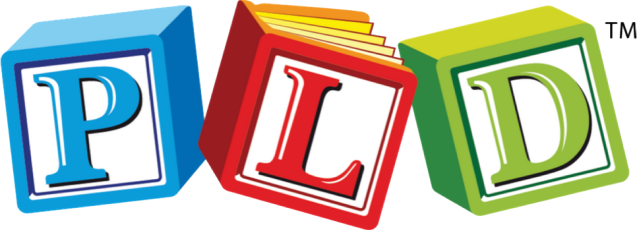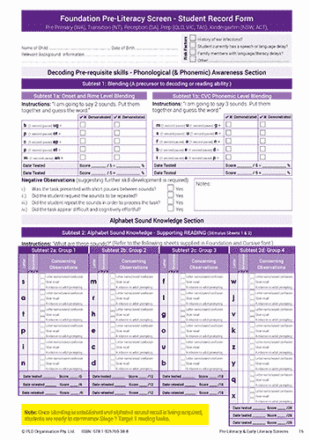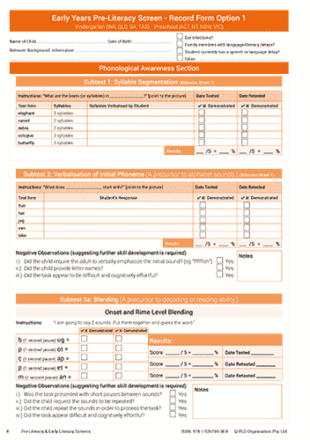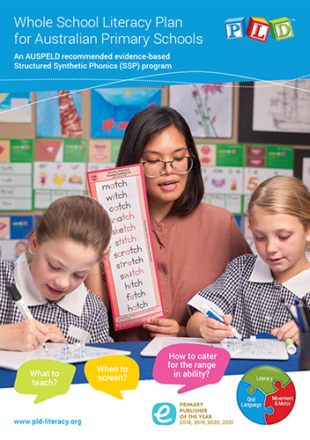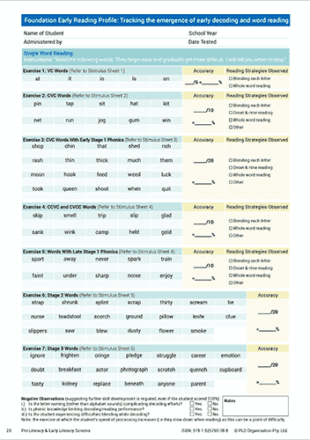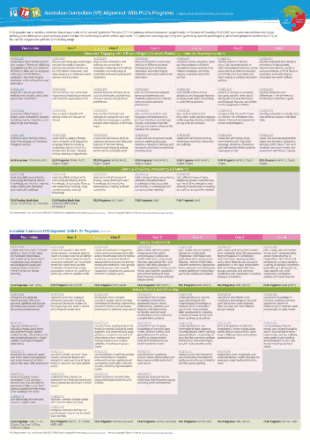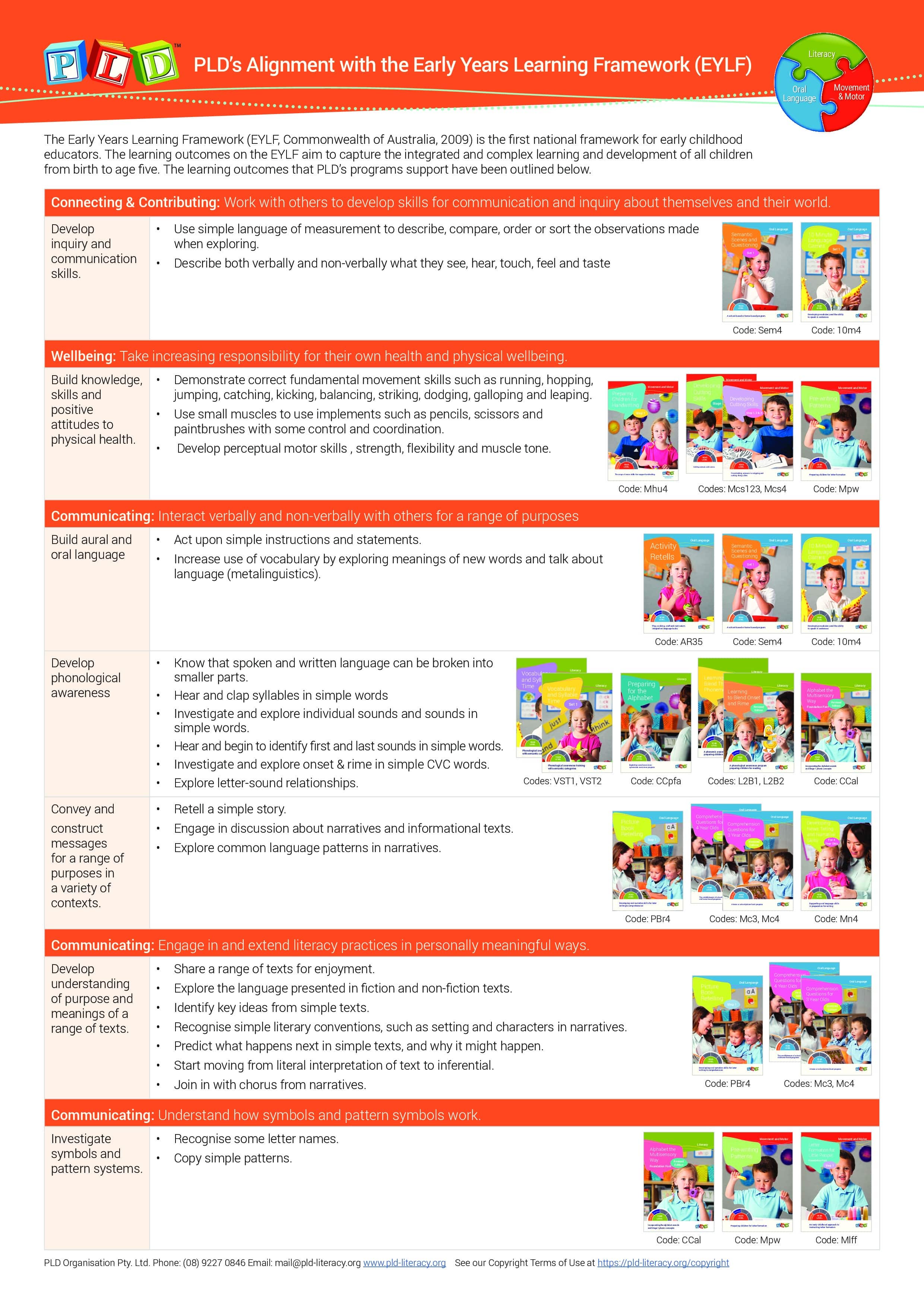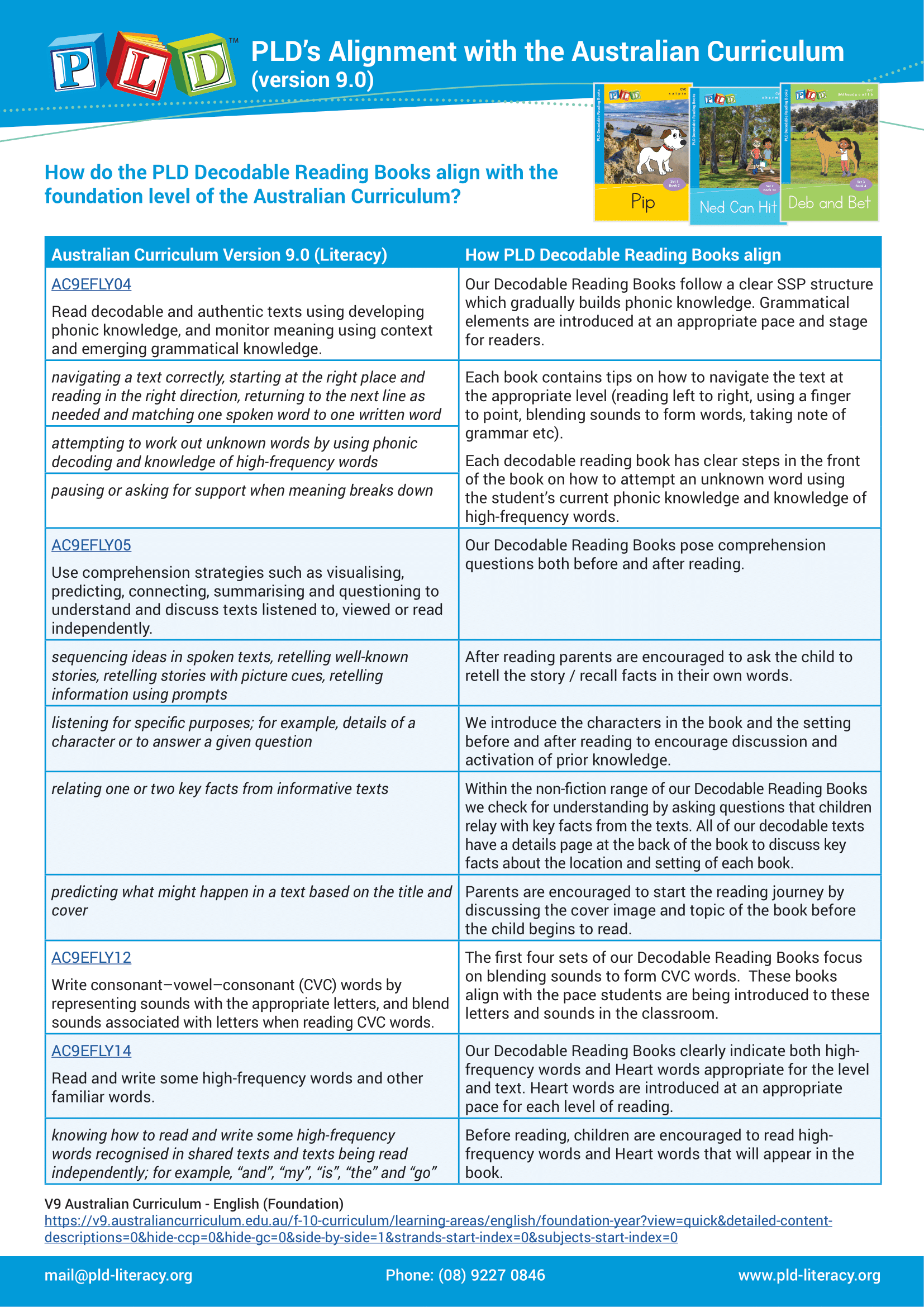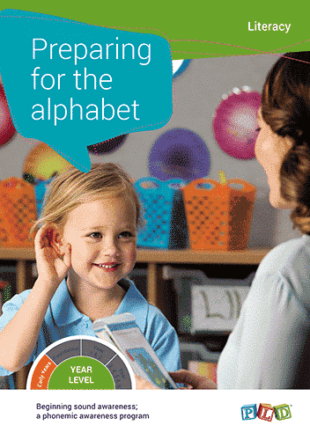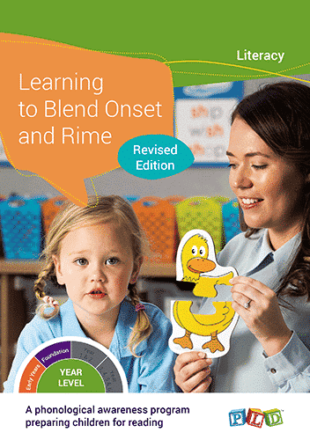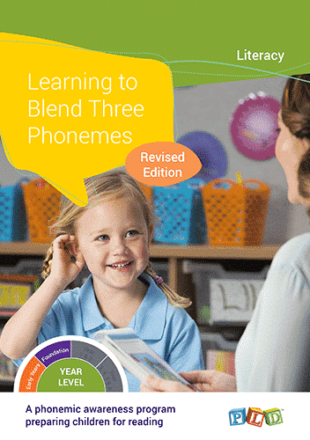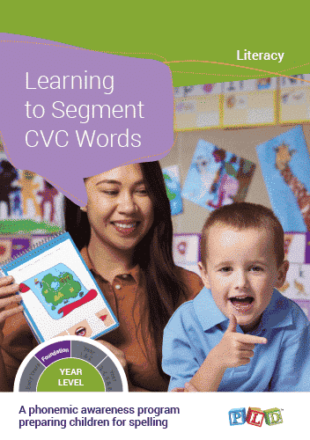-
Foundation Pre-Literacy Screen
Revised for 2020.
The Foundation Pre-Literacy Screens have been designed to profile the acquisition of core literacy precursor skills that will impact later reading, spelling and phonic development.
-
Early Years Pre-Literacy Screening
The Pre-Literacy Screens have been designed to profile the acquisition of core literacy precursor skills that will impact later reading, spelling and phonic development.
The screen focuses on two main skills: 1. Phonological Awareness: the ability to attend to the phonological structure or sound structure of words. 2. Alphabetic
-
PLD’s Whole School Literacy Plan
The document outlines how to implement PLD’s literacy, Movement and Motor and Oral Language resources during the Early Years, Foundation, Year 1 & 2 and across Years 3 to 6. Each page provides suggested time frames and implementation recommendations.
The purpose of this document is to provide an implementation outline to assist schools in scheduling the PLD programs within a broad school-based strategy. When
-
Early Reading Screen – Foundation
Tracking the emergence of early decoding and word reading.
The Early Reading Screen – Foundation is designed to track the emergence of decoding and word reading. The screen can be used to track skill
The Pathway of Pre-Literacy into Early Literacy
Schools will have literacy results maximized over the long-term when they systematically plan how students progress from pre-literacy (or emergent literacy skills) into their early literacy skills. The two primary areas that will facilitate a smooth transition into early reading and spelling are:
- Phonemic awareness (and specifically blending for early reading and segmentation for early spelling and writing)
- Alphabet sound knowledge
Research reminds schools that teaching in each of the above areas is reported to be most effective when skills are taught explicitly and it is systemically; when the order of the skills are strategically planned and when the learning rate is carefully monitored. Researchers remind schools that it is the system that is more important than the quantity of instruction being delivered. The tracking of student skill acquisition is paramount.
- Download the associated Early Years Pre-Literacy Screening tool
- Download the associated Foundation Pre-Literacy Screening tool
- Download the associated Reading Profile – Foundation Year Screening tool
This download is adapted for schools which have an Early Years and Foundation program (option 1 on the attached download) or in contrast when schools do not have a 4/5 year old program and are relying upon a Foundation program only to develop pre-literacy skills and then to facilitate early reading, spelling and writing in the students. The Whole School Literacy Strategy provides an outline of option 1 on pages 5, 8 and 9 and option 2 on pages 8 and 9. Getting this right in schools is imperative, as most researchers agree that prevention is easier than later remediation and in fact, most students who get off to a poor start in literacy rarely catch up.
See our Copyright Terms of Use at https://pld-literacy.org/help-pages/copyright-policy/.
Books: PLD’s books may only be used by the Authorised Purchaser, and the Authorised Purchaser’s students, and only in conjunction with classes taken by the Authorised Purchaser. PLD’s books may be photocopied up to 10% per year for use only by the Authorised Purchaser. The Authorised Purchaser is defined as the original purchaser of the PLD materials.
eBooks: PLD’s eBooks may only be used by the Authorised Purchaser, and the Authorised Purchaser’s students, and only in conjunction with classes taken by the Authorised Purchaser. The Authorised Purchaser is defined as the original purchaser of the PLD eBook. Under the ‘Statutory Educational Licence’ the authorised purchaser can:
- View the eBook as a whole or in part
- Copy the eBook to their personal drive or locally on their device
- Display the eBook on your Interactive Whiteboard, projector or smart TV, for the purpose of teaching the students in their own classroom
- Photocopy or print up to 10% of the eBook per year, for use with the students in their classroom(s).
For copyright purposes, every page of the PLD eBooks will be stamped with the name & email address provided by the purchaser at the time of order. PLD ebooks belong solely to the purchaser and may not be shared with colleagues, parents or anyone else. PLD eBooks must not be uploaded to school servers, intranets or online platforms. Schools wishing to licence PLD eBooks can contact us HERE.
School Licences: A School Licence is a multi-user subscription to a PLD resource, such as a book or program, in a digital and printable format that is accessible via the ‘My Subscription’ section of the PLD website. A School Licence is valid for 12 months from the date of purchase and can be used by an unlimited number of teachers within a school. When bought under a School Licence:
- Resources are accessible in digital, flipbook format, which teachers can access from anywhere, at any time, on any device via the PLD website.
- The resources can be used by any amount of teachers in that school.
- Multiple teachers can access the resources simultaneously.
- The resource is available to print, subject to the standard 10% per year limitation as per Australian Copyright law.
- Updated versions of resources will be automatically accessible to users with a current licence for free, ensuring all users have access to the latest versions of resources.
- Resources are stored centrally and accessed via a secure login account on the PLD website. Thus, all currently subscription resources are accessible in the one convenient place, making resources extremely easy to find. Moreso, the school licence offering eradicates the frustration of lost or misplaced resources and programs which happens often with hardback books.
Additional information can be accessed via the following links:
Books: https://support.pld-literacy.org/en-au/article/plds-printed-electronic-materials-how-can-they-be-used-can-i-share-them-with-a-friendcolleague-9lk4y/
eBooks: https://support.pld-literacy.org/en-au/article/the-pld-ebooks-how-can-they-be-used-what-is-the-copyright-policy-ptfya8/
PLD’s Copyright Policy: https://support.pld-literacy.org/en-au/article/copyright-and-terms-of-use-of-pld-literacy-15tkcer/

